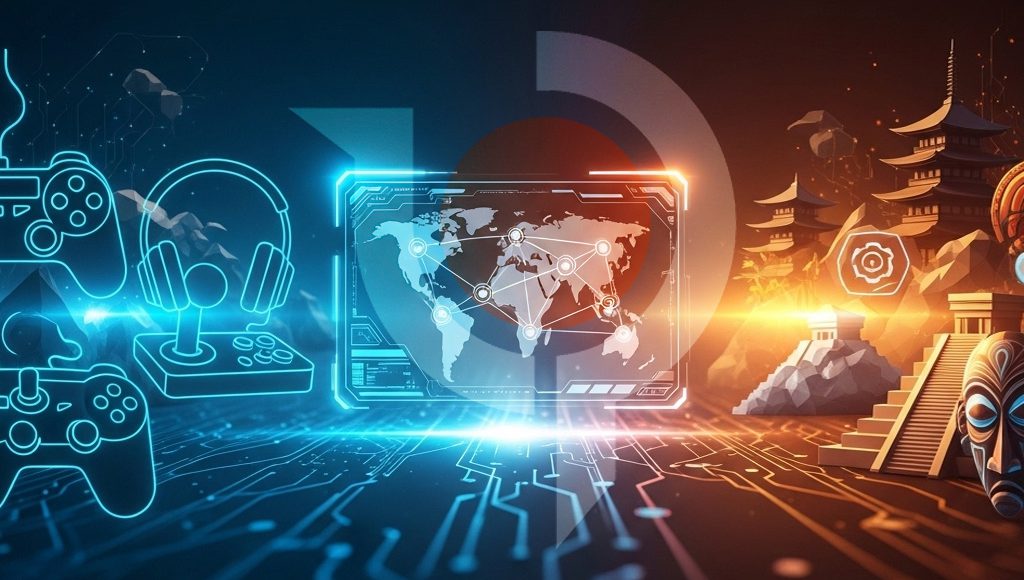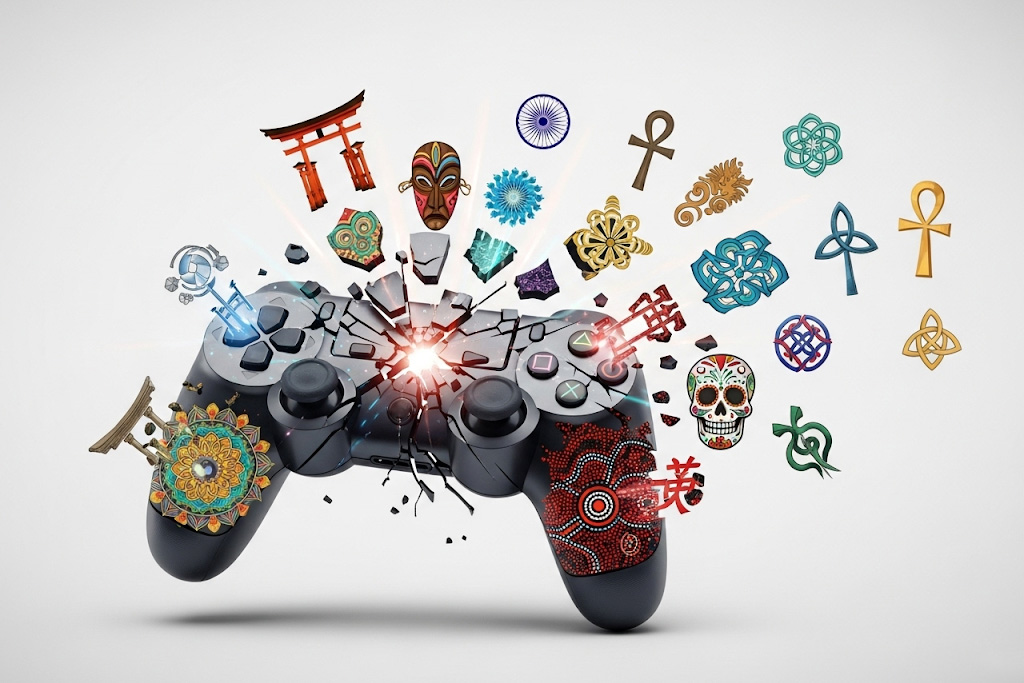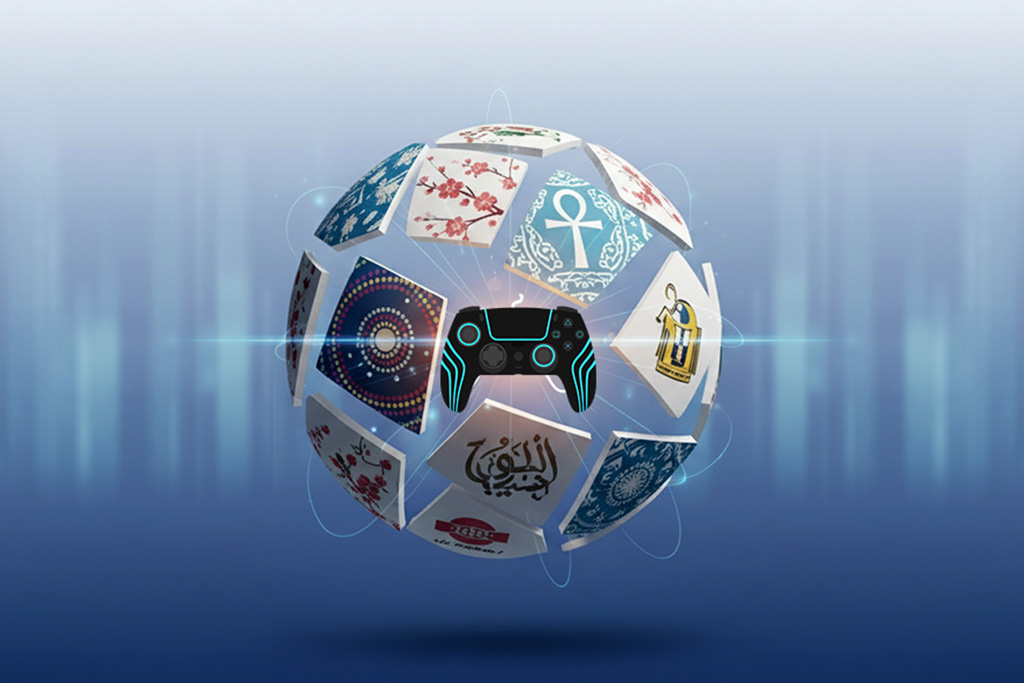Best Practices for Localising Dialogues and Narratives in Video Games
Localising dialogues and narratives in Video Games is no longer an added feature; it’s essential for providing an immersive, native experience across varied international gaming markets.
6 minutes – read
Game localisation goes way beyond literal translation of video games line-by-line. It’s about adapting jokes, idioms, tone, character voice and lore so that players feel the story was made for them.
Did you know that 76% of gamers prefer to play in their native language, and surveys show that localised games significantly boost purchase intent and engagement? These are the commercial imperatives behind a rigorous video game localisation process, right from glossary creation to in-game testing.
This article walks Localisation Leads through actionable strategies and best practices for localisation of dialogues and narratives, with practical tips, microexamples, and trusted vendor solutions that make for a native, low-friction player experience.
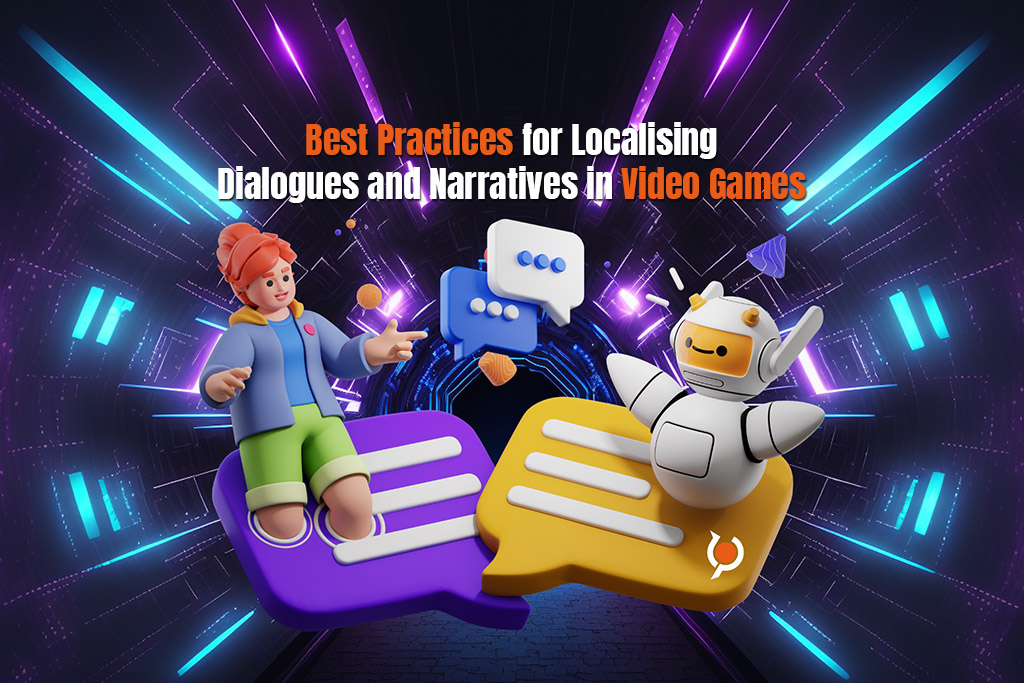
Why Dialogue & Narrative Localisation Matters: Player Experience, Brand, and Revenue
True game localisation differs from literal translation by embedding cultural nuances into every aspect of the game’s content. This preserves immersion, ensuring players feel the story is tailored for them rather than awkwardly imposed.
Without it, cultural mismatches can shatter suspension of disbelief and increase player churn as gamers disengage from unrelatable narratives.
Consider the following micro-example: A character says, “That’s the icing on the cake!”, a common idiom for an added bonus, in a western-developed game. If that is literally translated into Japanese, it will cause players to be confused because the phrase does not bear the same weight.
Instead, localisation could rewrite it as “That’s the cherry on top of the sundae!” or a culturally equivalent expression like “That’s the finishing touch!” to maintain humour and flow. Such adaptations keep the dialogue punchy and relevant.
Professional localisation companies use in-context checks and ISO-backed workflows (ISO 17100, ISO 9001, ISO 18587) and perform in-game live checks to validate tone, timing, and UI fit before launch. This is best practice to ensure successful global rollouts.
For professional assistance, we offer video game localisation, live in-game testing, and ISO-certified project management in more than 100 languages.

Immediate Benefits of Professional Localisation:
- Improved Engagement: Culturally resonant narratives keep players hooked, with studies showing as high as 76% prefer playing games in their native language.
- Refunds and Returns Reduced: Fewer cultural faux pas mean better reviews and lower churn rates.
- Higher Retention and Revenue: Localised games tap into new markets, boosting sales through targeted appeal.
The Video Game Localisation Process: From Concept to Cultural Fit
Video game localisation is a step-by-step journey of change in which the initial form of the game gets transformed into a culturally attuned product.
It involves familiarisation, whereby linguists get themselves thrown into the world, story, and mechanics of the game to understand contexts. Thereafter comes glossary creation, compiling key terms like character names, items, and lore to consistency across languages.
Translation follows, adapting text while preserving intent, succeeded by editing and proofreading to refine tone and flow. Finally, quality assurance, including in-game testing, ensures everything is running smoothly-from subtitles right through to voice-overs-and master-up & sign-off, with final validation and release.
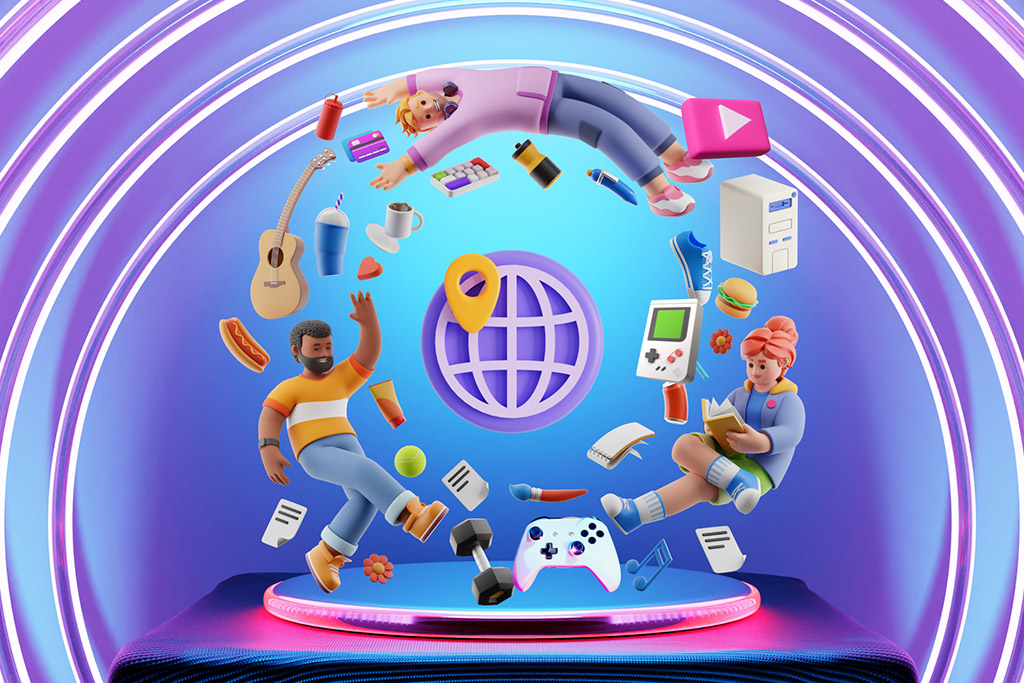
Actionable tips can streamline this:
- Internationalise early: avoid hard-coded strings, use placeholders and enable UTF-8 and variable length fields.
- Supply context: provide character bios, relationship maps, tone notes, and reference videos, translators need more than isolated strings.
- Use a single source of truth: maintain glossaries and TFMs so the whole team (dev, QA, localisation) aligns.
- Regulatory Considerations: evaluate local age ratings and cultural sensitivities upfront, identifying potential issues with iconography, symbols, and the use of historical references.
- Choose partner with PM rigour: select vendors with dedicated project managers, ISO-backed processes, and in-context testing like 1Stop Translations (20 years’ experience, 100+ languages, in-game live checks).
Key Strategies for Localising Dialogues in Video Games
Localising dialogue requires specificity in order to maintain the character voice and cultural resonance. Notes on best practices call for making lines intentional and concise, avoiding wordiness that may cause hiccups in voiced scenes.
Preserve tone according to dynamics, formal for authority figures and friendly for allies, while steering clear of literal translations that flatten humour or idioms.
Here are 7 actionable tips:
- Provide Full Context: Share backstory, visuals, and audio clips with translators to capture nuances.
- Develop Style Guides: Outline character-specific speech patterns, slang levels, and taboo topics for consistency.
- Run In-Game Live Checks: Test dialogues during gameplay to ensure lip-sync, timing, and immersion.
- Native Reviewer Iterations: Engage cultural experts to get feedback on resonance and sensitivity.
- Balance conciseness with expressiveness: tighten up lines, without losing emotional depth.
- Handle Voice Acting Adaptations: Match dubbing to local accents where applicable.
- Use Tools for Collaboration: Leverage platforms for real-time edits to to reduce iteration time.

Real-world examples video game localisation demostrate these strategies. In Dragon Quest XI, the localisation team adapted tones with regional accents, Italian-inspired for Gondolia and Scottish for Dundrasil, enhancing immersion and earning praise for its brilliant writing.
On other hand, Pokémon faced challenges with cultural mismatches, like redesigning Jynx to address sensitivities or localising foods (e.g., onigiri as “jelly donuts”) to avoid confusion.
Final Fantasy titles have long-standing examples of re-localisation efforts to align narrative tone with international audiences.
These cases show why combined linguistic and cultural expertise matters.
Adapting Narratives: Best Practices and Cultural Considerations
Adapting complex stories requires techniques like transcreation, creatively reworking stories for cultural fit, while addressing sensitivities such as religion, politics, or history.
Localise images, audio, and even gameplay elements to comply with regional rules, like modifying outfits for modesty or altering plots to meet censorship standards. Ensure narratives align with age ratings, avoiding content that could lead to bans.
Best solutions include:
- Transcreation for Depth: Rewrite lore to evoke the same emotions without direct equivalents.
- Culturalisation to Avoid Offence: Study taboos and make proactive changes.
- Tip: Use focus groups from target markets.
- Example: In Crash Bandicoot, humour and character designs were adapted for regional appeal, softening features and UI to match cultural preferences.
- Post-Localisation QA: Rigorous testing for coherence and bugs.
- Tip: Make mock playthroughs in localised versions.
- Example: The Final Fantasy series often rewrites dialogues for lip-sync and cultural immersion, such as in voice-acted entries where scripts were overhauled for natural flow.
- Multimedia Adaptation: Subtitling and dubbing with local talent.
FAQ
- What is the video game localisation process?
It involves familiarisation, creation of glossaries, translation, editing, proofreading, and QA with in-game testing to ensure both cultural and technical fit. - How do you localise jokes and cultural references in games?
Use transcreation to to craft the local equivalents that will work, adding context and native reviewers’ input to keep the humor without offending. - What QA steps are essential before launch?
This would include linguistic reviews, in-game checks for functionality, cultural sensitivity audits, and beta testing with target audiences.
For localisation leads seeking certified partners that successfully combine technical I18N knowledge, creative transcreation, and rigorous in-game QA, a specialist vendor with ISO-certified processes and dedicated PMs is essential.
1Stop Translations provides professional video game localisation services, transcreation, subtitling and in-game live checks across 100+ languages, an operational fit for AAA and indie projects that need tight coordination and cultural accuracy.
Contact us today to explore how we can collaborate on your next title and bring your narratives to life across the globe.
Need a quote? Click here

